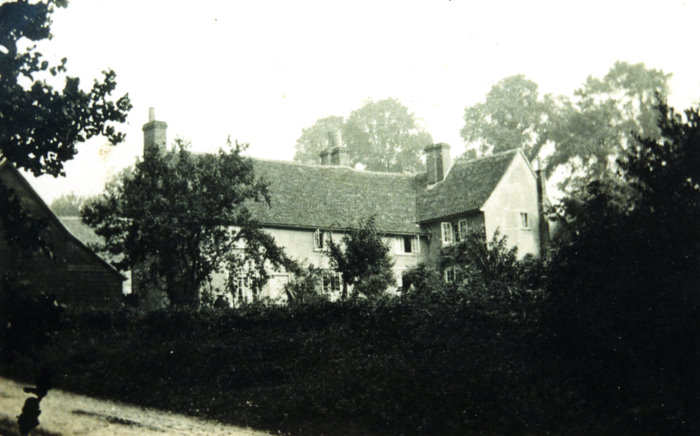 |
|
| Fagnall Farm c1909 |
Fagnall Lane and Fagnall Farm take their name from 12 acres of arable land called Fagmans, which were part and parcel of a farm belonging to Thomas Bovingdon of Coleshill in 1602.1 Joseph Bovingdon added to the farm in 1641 by purchasing two further closes from John Plater at a cost of £180. This land had once been part of the manor of Tomlins in Amersham. It was described as:
All that land sometime being two closes now one close called Tomlins whereof one part abutteth upon a lane called Sansommes Lane together also with a certain parcel of new stocked ground being sometimes wood ground and then called Tomlins Spring adjoining to the aforesaid two closes on one side and to a close called Sheppards Close on the other side and abutting upon the said lane called Sansommes Lane containing by estimation 16 acres situate at Coleshill in the parish of Amersham Co Herts
This locates Tomlins next to Sansons Lane, now called Coleshill Lane, but in referring to 'new stocked ground', the conveyance suggests that clearance of woodland for cultivation was still going on in the 17th century.
Joseph Bovingdon paid tax on four hearths in 1662, suggesting that Fagnalls Farm was a very substantial building. The house and land called Fagmans and Tomlins were part of a 1672 settlement when Joseph's son John Bovingdon married Elizabeth Harding.2 John Bovingdon, of Coleshill yeoman died in 1727, leaving his property to his son Joseph Bovingdon. Joseph mortgaged the farm and finally sold it in 1735 to Thomas West of St James's Westminster, coachmaker, for £1,510. West sold it to Assheton Curzon of Penn about 1750, when it was occupied by James Redding. A James Redding of Coleshill farmer left a will in 1806. John and William Butcher occupied the farm for much of the 19th century, but in 1910, Lord Howe's tenant at Fagnalls' Farm was James Gibbs. By 1918, Fagnall Farm was occupied by Albert Hatch, who began releasing building plots on the east side of Fagnall Lane about 1925. With local builder Arthur Pursey, he built several small bungalows, either for sale or to rent, before the Second World War. Albert Hatch was the Superintendant of the Primitive Methodist Chapel and opened the new hall there in 1953.
Fagnalls Farm still belongs to Earl Howe and the barns are now converted into business units, including Henley Water Ltd, water treatment suppliers, and O-bit.com, an IT company.
